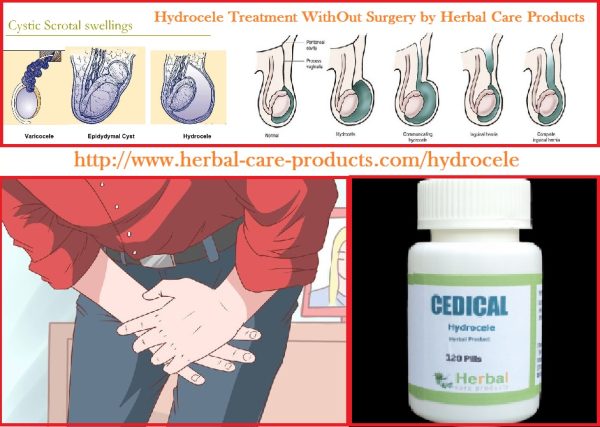What Is a Hydrocele?
A hydrocele is a sac filled with fluid that forms around a testicle. Hydroceles are most common in babies. According to the Official Foundation of the American Urological Association, nearly 10 percent of males are born with a hydrocele. However, they can affect males of any age.
Hydroceles generally don’t pose any threat to the testicles. They’re usually painless and disappear without treatment. However, if you have scrotal swelling, see your doctor to rule out other causes such as testicular cancer.
What Causes of Hydrocele?
Towards the end of pregnancy, a male child’s testicles descend from his abdomen into the scrotum. The scrotum is the sac of skin that holds the testicles once they descend.
During development, each testicle has a naturally occurring sac around it that contains fluid. Normally, this sac closes itself and the body absorbs the fluid inside during the baby’s first year. However, this doesn’t happen for babies with causes of hydrocele. Babies born prematurely are at a higher risk for hydrocele, according to the Mayo Clinic.
Causes for hydrocele can also form later in life, mostly in men over 40. This usually occurs when the channel through which the testicles descend hasn’t closed all the way or reopens. This can cause fluid to move from the abdomen into the scrotum. Hydroceles can also be caused by inflammation or injury in the scrotum. The inflammation may be caused by an infection (epididymitis).
Types of Hydroceles
The two types of hydroceles are noncommunicating and communicating.
Noncommunicating
A noncommunicating hydrocele occurs when the sac closes, but your body doesn’t absorb the fluid. The remaining fluid is typically absorbed into the body within a year.
Communicating
A communicating hydrocele occurs when the sac surrounding your testicle doesn’t close all the way. This allows fluid to flow in and out.
What Are the Symptoms of Hydrocele?
Symptoms for hydrocele usually don’t cause any pain. Usually, the only symptoms of hydrocele is a swollen scrotum.
In adult men, there may be a feeling of heaviness in the scrotum. In some cases, the swelling might be worse in the morning than in the evening.
Seek medical treatment if you or your child has sudden or severe pain in their scrotum. This could be the sign of another condition called testicular torsion. Testicular torsion occurs when the testicles become twisted, typically due to an injury or accident. Testicular torsion isn’t common, but it’s a medical emergency because it can lead to blocked blood supply to the testicle. If you think you or child has testicular torsion, go a hospital emergency room right away or call 911. It needs to be evaluated and treated immediately.
Diagnosis of Hydroceles
To diagnose a hydrocele, your doctor will perform a physical exam. If you have a hydrocele, your scrotum will be swollen, but you won’t have any pain. Your doctor won’t be able to feel your testicle through the fluid-filled sac.
Your doctor may check for tenderness in the scrotum and shine a light through the scrotum. This is called transillumination. It allows your doctor to determine if there’s fluid in the scrotum. If fluid is present, the scrotum will allow light transmission and the scrotum will appear to light up. However, if scrotal swelling is due to a solid mass (cancer), then the light will not shine through the scrotum.
Your doctor may also apply pressure to the abdomen to check for another condition called inguinal hernia. This can occur when part of the small intestine protrudes through the groin due to a weak point in the abdominal wall. While it’s usually not life-threatening, a doctor may recommend surgery to repair it.
They may take a blood or urine sample to test for infections. Less commonly, your doctor may administer an ultrasound to check for hernias, tumors, or any other cause of scrotal swelling.
How to Treatment of Hydrocele
If your new infant has a hydrocele, it will probably go away on its own in about a year. If your child’s hydrocele doesn’t go away on its own or becomes very large, he might need surgery.
In adults, treatment for hydrocele typically go away within six months, according to the Herbal Care Products. Treatment of hydrocele usually needs surgery if it’s a communicating hydrocele (because it can lead to hernias) or it causes discomfort.
Natural Herbal Remedies
This is the way to treat where a fluid-filled sac develops inside the scrotum around the testis, making it look swollen. Cedical for hydrocele natural remedies without any effect. Treatment by hydrocele herbal remedies we prefer the Herbal Care Products company, who are create home remedies for patients. hydrocele natural treatment is the Cedical product. Best hydrocele herbal treatment help to improve swelling of the scrotum with fluid.
Surgery
Surgery to remove a hydrocele is performed under anesthesia. In most cases, you’ll be able to go home within a few hours of the surgery.
A small cut is made in the abdomen or scrotum (depending on the location of the hydrocele) and the hydrocele is surgically removed. Your surgeon will most likely apply a large dressing to the site of your incision. You may also need a drainage tube for a few days.
Risks associated with anesthesia include:
- allergic reactions
- breathing difficulties
- heart rhythm disturbances
Risks associated with this procedure include:
- blood clots or excessive bleeding
- scrotal injury, including nerve damage
- infection
Ice packs, a support strap for your scrotum, and plenty of rest will ease discomfort after the surgery. Your healthcare provider will likely recommend a checkup exam because a hydrocele can sometimes reoccur.
Needle Aspiration
Another option for hydrocele treatment is to drain it with a long needle. The needle is inserted into the sac to draw out the fluid. In some cases, a drug may be injected to prevent the sac from filling again. Needle aspiration is commonly performed on men who are at high risk for complications during surgery.
The most common side effects of needle aspiration are temporary pain in your scrotum and risk of infection.
What to Expect After Surgery
Whether your hydrocele goes away on its own or requires surgery, the outlook is excellent.
If you have surgery, the pain will probably go away in about a week. Your doctor may prescribe pain medication if you find it necessary. You probably won’t return to normal activities for a few weeks. This includes avoiding anything involving straddling, like riding a bike, for at least three weeks. Other strenuous activities should also be avoided during that time.
Stitches at the incision site usually dissolve on their own, but your doctor may want to check them after a few weeks. Keeping the area clean using showers or sponge baths will help prevent infection.
Source Link : http://www.healthline.com/health/hydrocele#overview




